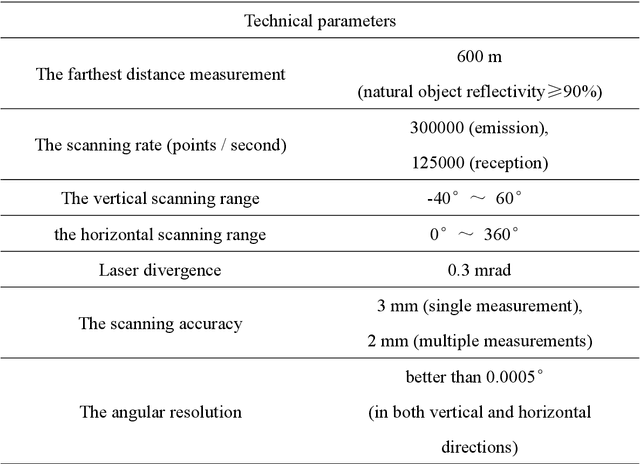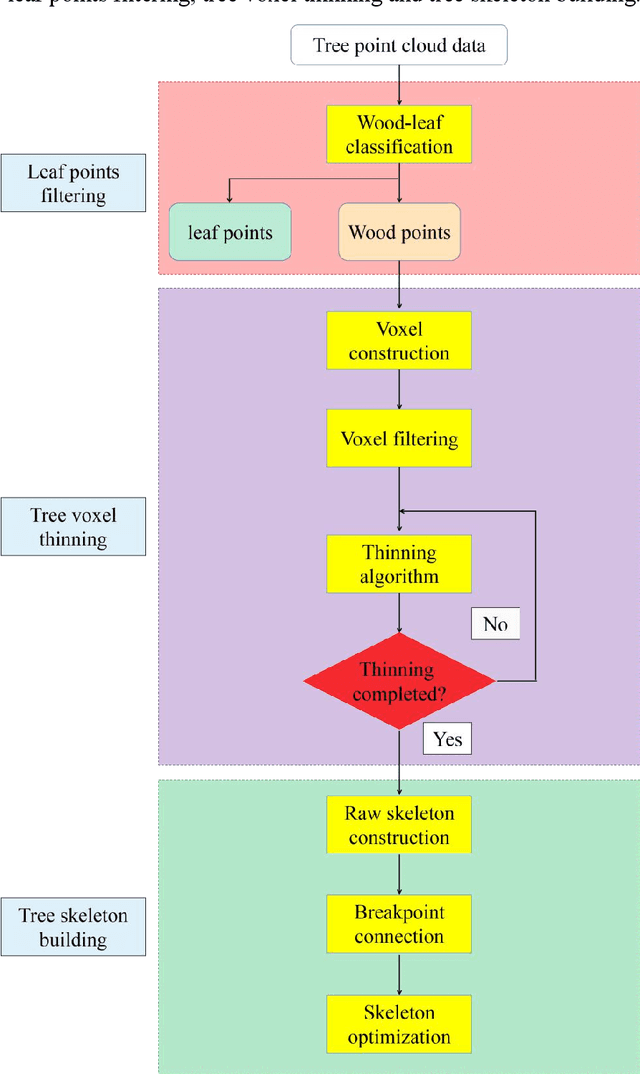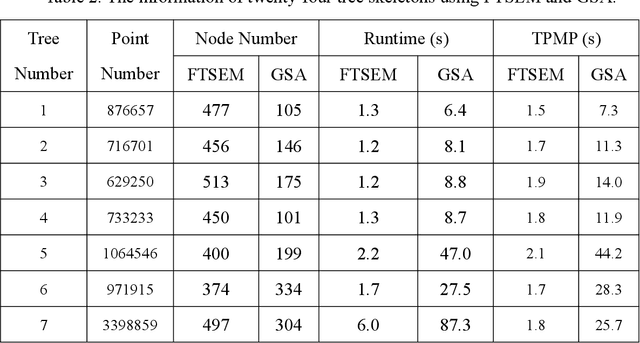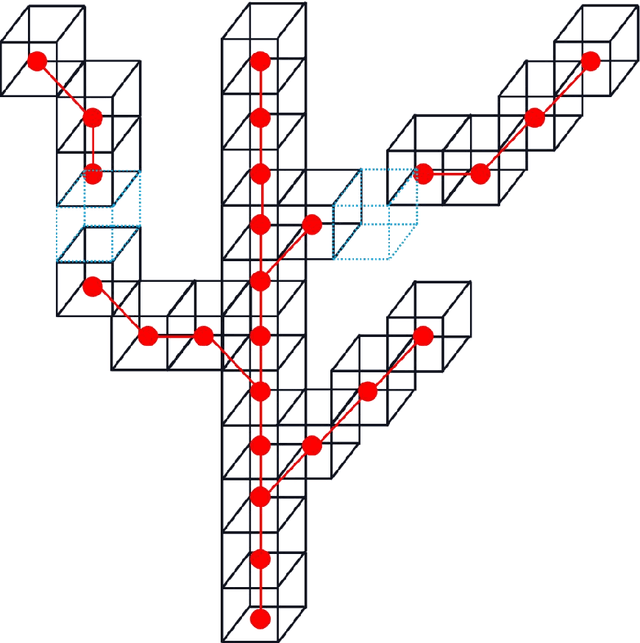Mei Zhou
Fast tree skeleton extraction using voxel thinning based on tree point cloud
Oct 18, 2021



Abstract:Tree skeleton plays an important role in tree structure analysis, forest inventory and ecosystem monitoring. However, it is a challenge to extract a skeleton from a tree point cloud with complex branches. In this paper, an automatic and fast tree skeleton extraction method (FTSEM) based on voxel thinning is proposed. In this method, a wood-leaf classification algorithm was introduced to filter leaf points for the reduction of the leaf interference on tree skeleton generation, tree voxel thinning was adopted to extract raw tree skeleton quickly, and a breakpoint connection algorithm was used to improve the skeleton connectivity and completeness. Experiments were carried out in Haidian Park, Beijing, in which 24 trees were scanned and processed to obtain tree skeletons. The graph search algorithm (GSA) is used to extract tree skeletons based on the same datasets. Compared with GSA method, the FTSEM method obtained more complete tree skeletons. And the time cost of the FTSEM method is evaluated using the runtime and time per million points (TPMP). The runtime of FTSEM is from 1.0 s to 13.0 s, and the runtime of GSA is from 6.4 s to 309.3 s. The average value of TPMP is 1.8 s for FTSEM, and 22.3 s for GSA respectively. The experimental results demonstrate that the proposed method is feasible, robust, and fast with a good potential on tree skeleton extraction.
Automatic marker-free registration of tree point-cloud data based on rotating projection
Jan 30, 2020



Abstract:Point-cloud data acquired using a terrestrial laser scanner (TLS) play an important role in digital forestry research. Multiple scans are generally used to overcome occlusion effects and obtain complete tree structural information. However, it is time-consuming and difficult to place artificial reflectors in a forest with complex terrain for marker-based registration, a process that reduces registration automation and efficiency. In this study, we propose an automatic coarse-to-fine method for the registration of point-cloud data from multiple scans of a single tree. In coarse registration, point clouds produced by each scan are projected onto a spherical surface to generate a series of two-dimensional (2D) images, which are used to estimate the initial positions of multiple scans. Corresponding feature-point pairs are then extracted from these series of 2D images. In fine registration, point-cloud data slicing and fitting methods are used to extract corresponding central stem and branch centers for use as tie points to calculate fine transformation parameters. To evaluate the accuracy of registration results, we propose a model of error evaluation via calculating the distances between center points from corresponding branches in adjacent scans. For accurate evaluation, we conducted experiments on two simulated trees and a real-world tree. Average registration errors of the proposed method were 0.26m around on simulated tree point clouds, and 0.05m around on real-world tree point cloud.
 Add to Chrome
Add to Chrome Add to Firefox
Add to Firefox Add to Edge
Add to Edge